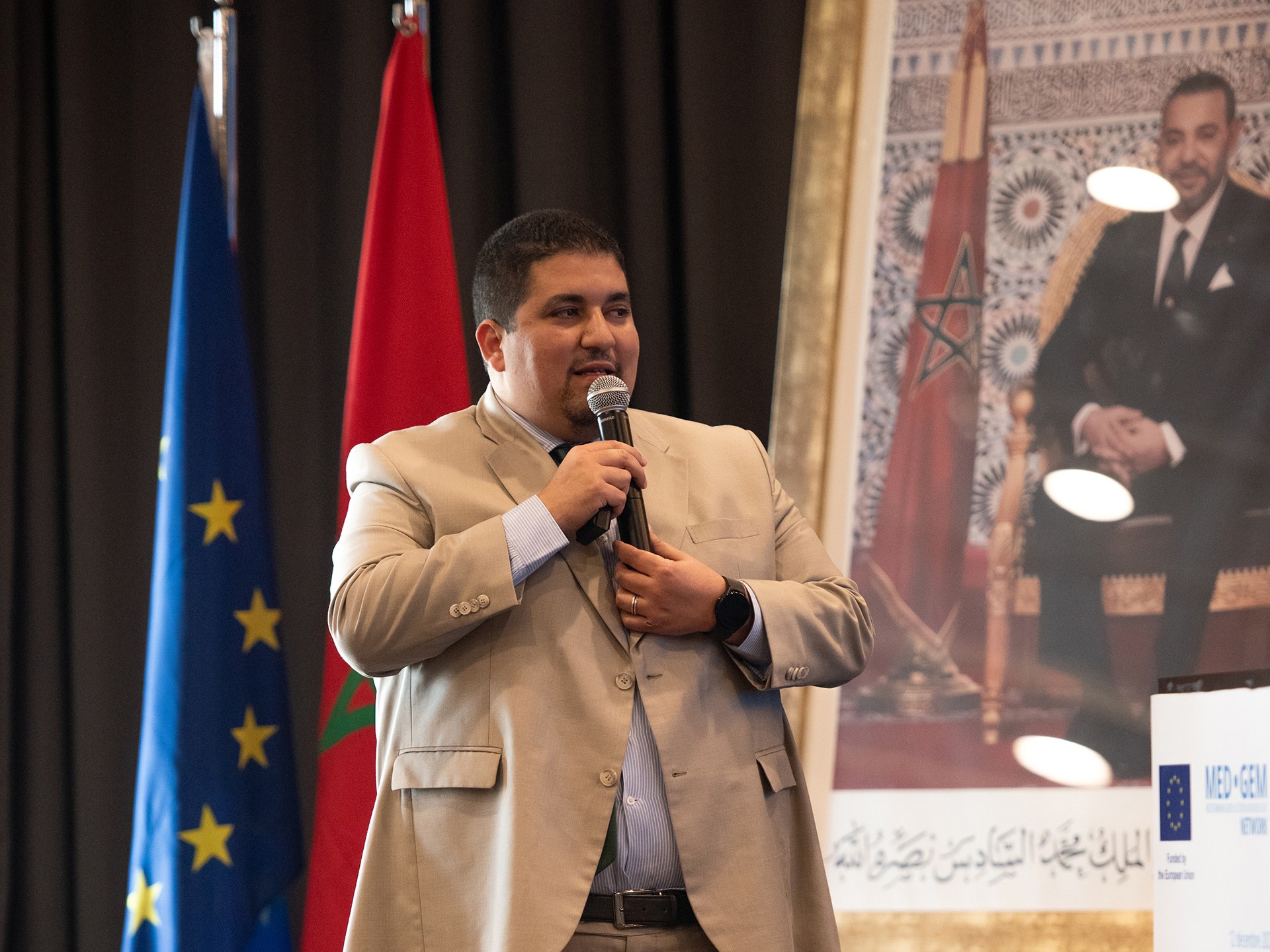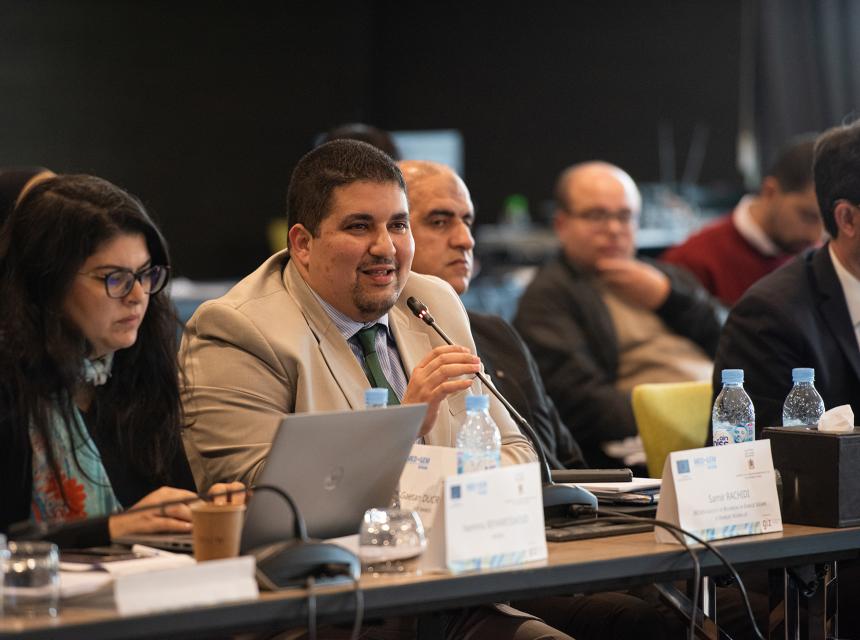Shedding Light on Hydrogen: Samir Rachidi of IRESEN shares his vision for a green industry in Morocco and the Mediterranean
In this interview with Dr. Samir Rachidi, General Director of the Research Institute for Solar Energy and New Energies (IRESEN), we delve into the collective insights initiated by the MED-GEM network in a previous National consultation workshop in Rabat, Morocco. The focus on the potential of hydrogen as a catalyst for partnership, cooperation, and the emergence of a green industry between the European Union and the South Mediterranean reveals ambitious aspirations. Rachidi unveils perspectives, challenges, and efforts to turn this opportunity into a sustainable reality for the region.

How is IRESEN supporting the development of green hydrogen in Morocco, and what strategies are being adopted to overcome technological and industrial barriers?
As a manager of a research infrastructure, I emphasize the crucial role of innovation in deploying green hydrogen on a large scale in Morocco, especially in Africa and the broader MENA region (Middle East, North Africa, Europe). Our primary goal as a developing country is to leverage our research infrastructure, researchers, and nascent industry for initial learning. This encompasses understanding hydrogen technologies, production techniques, as well as mastering the know-how, constraints, levers, and technological and industrial challenges for deploying this industry in our region.
We also aim to use this ambition as an opportunity to train our human capital, focusing on developing the skills of researchers, engineers, technicians, and project managers. It is essential to recognize that success in these ambitious projects depends not only on infrastructure and equipment but also on skills and collective intelligence mobilized for their success.
Lastly, in my message to EU decision-makers, I consistently highlight the exceptional opportunity we have together, between the northern and southern Mediterranean, to create significant green value in our Mediterranean basin. This shared vision can truly become a driver for fruitful collaboration, generating positive outcomes for all parties involved.
Currently, hydrogen is receiving significant attention, with essential questions being raised: how to transport it? How to certify it? In what form do we plan to use it? What are the possible applications, and so on? However, there is a lack of discussion on the upstream side. By upstream, I primarily refer to sectors such as the photovoltaic industry, wind industry, battery industry, electrolyzer industry, and desalination industry. These upstream industries are relatively scarce, if not non-existent, in Europe.
The goal is to create a win-win situation with South Mediterranean countries, including not only Morocco but also Algeria, Tunisia, Egypt, and others. This represents a vast market where everyone has a place. The ambition goes beyond, aiming to establish gigafactories producing photovoltaic panels and electrolyzer wind turbines in both regions, covering both shores of the Mediterranean in a complementary manner. This approach aims to generate wealth, create jobs, and contribute to stabilizing populations facing migration challenges. The issue of migration remains particularly relevant in European societies, and this perspective will also enable developing countries like Morocco to progress and meet the needs of their citizens.
How do research projects support hydrogen deployment and ensure technological adaptation to the Mediterranean context, along with the necessary skills training?
Regarding our research and innovation fund project to support large-scale hydrogen deployment, our focus extends to all technologies comprising the value chain. There is a particular emphasis on the electrolyzer, considered the potentially weak link requiring strengthening in terms of technological and industrial maturity. However, our perspective acknowledges our position and does not initially aim to create new knowledge or innovations, knowing that more advanced countries can provide their expertise.
Initially, our goal is to be informed users of the technology. This means being able to use an electrolyzer, extract data, compare technologies, and especially ensure adaptation to the local Mediterranean context. Although the region enjoys significant sunlight, it also presents challenges such as the presence of sand and dust, aspects that may differ from European countries. Therefore, before investing substantial amounts in large projects, it is essential to be certain about the technologies to apply and their adaptation to the local context.
Subsequently, a crucial need for support emerges, especially in the areas of training and pilot installation. While theoretical training is quickly manageable, the challenge lies in training human capital specialized in equipment use. This requires the implementation of small-scale green hydrogen electrolyzers, ranging from a few kilowatts to a few tens of kilowatts. These devices need to be integrated into research laboratories and training centers to qualify human capital consisting of technicians and engineers specialized in these technologies. The project also includes the creation of a megawatt-scale platform in collaboration with our UM6P partners. This platform aims to demonstrate, test, validate, and train human capital in anticipation of the large-scale deployment of this industry.
What are your expectations today with the MED-GEM Network, and how do you envision accelerating Moroccan environmental cooperation?
For me, this initiative represents the archetype of the essential platform between the two shores of the Mediterranean. It provides a conducive space for frank, straightforward discussions, not only from a technical and engineering perspective but also including regulatory, legal, and financial aspects. Deploying this industry on a large scale requires, both unfortunately and fortunately, a perfect alignment of various elements. It is imperative that all aspects are carefully studied and open to materialize a project.
From producing green electrons in the south of the Mediterranean to importing and using the green molecule in the north, involving the northern Mediterranean ports, this approach traverses a complex value chain. The process, inherent to a green project, presents unparalleled complexity. This project aims to simplify this complexity and create channels of exchange. Today's event brought together numerous stakeholders representing various sectors of the ecosystem, including private and public actors, gas and electricity carriers, as well as energy producers.
This represents a powerful tool that can be further strengthened, perhaps by introducing governance measures or implementing follow-up projects. These could uncover work topics based on the lessons of the current program, allowing in-depth analyses of specific themes. It could also serve as a consolidation point for all this expertise, facilitating the formulation of recommendations to the European Union and Southern countries.

